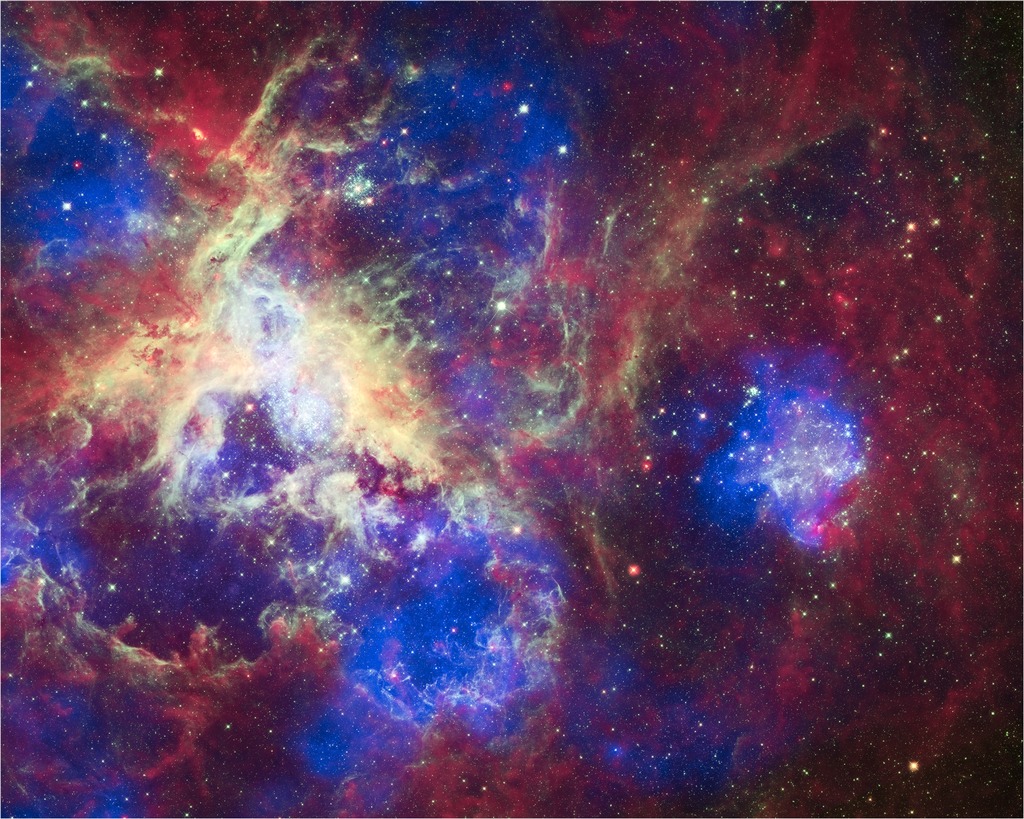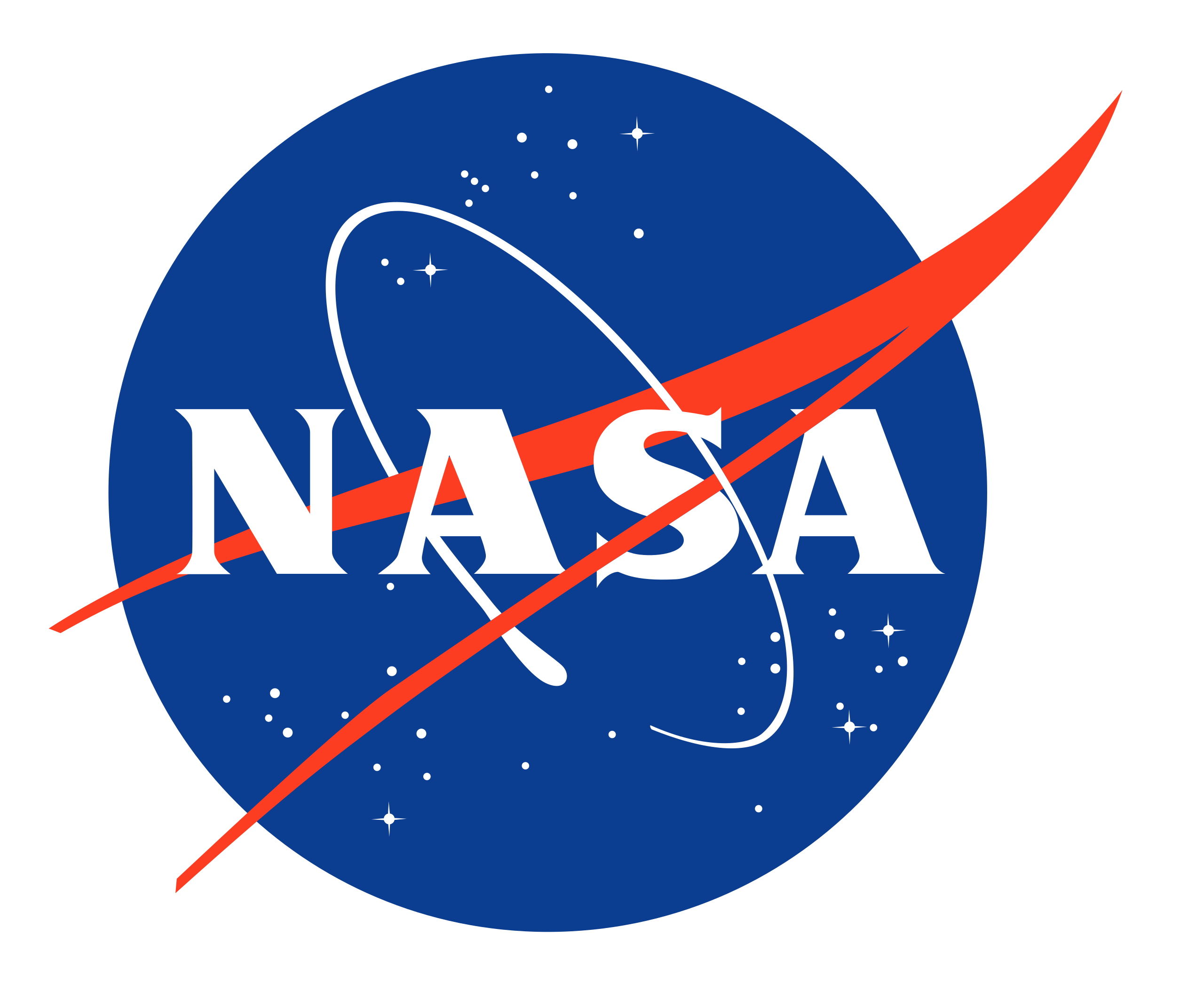
Credit: X-ray: NASA/CXC/PSU/L.Townsley et al.; Optical: NASA/STScI; Infrared: NASA/JPL/PSU/L.Townsley et al.
Observation • April 17th, 2012 • sig12-004
sig12-004
This composite of 30 Doradus, aka the Tarantula Nebula, contains data from Chandra (blue), Hubble (green), and Spitzer (red). Located in the Large Magellanic Cloud, the Tarantula Nebula is one of the largest star-forming regions close to the Milky Way. Chandra's X-rays detect gas that has been heated to millions of degrees by stellar winds and supernovas. This high-energy stellar activity creates shock fronts, which are similar to sonic booms. Hubble reveals the light from massive stars at various stages of star birth, while Spitzer shows where the relatively cooler gas and dust lie.
About the Object
- Name
- Tarantula Nebula
- Type
- Star > Grouping > Cluster
- Star > Evolutionary Stage > Young Stellar Object
- Nebula > Type > Star Formation
- Distance
- 160,000 Light Years
Color Mapping
| Band | Wavelength | Telescope |
| X-ray | 1.5 keV | Chandra ACIS |
| Infrared | 4.5 µm | Spitzer IRAC |
| Infrared | 5.8 µm | Spitzer IRAC |
| Infrared | 8.0 µm | Spitzer IRAC |
| Optical | 775 nm | Hubble ACS |
| Optical | 775 nm | Hubble WFC3 |
Astrometrics
- Position ()
- RA =5h 38m 42.3s
- Dec = -69° 6' 2.8"
- Field of View
- 13.2 x 10.6 arcminutes
- Orientation
- North is 28.5° left of vertical



